Questionhi!
We have a 5-gallon tank and have had several comets/goldfish that never last more than a few weeks. We never have more than two in the tank at once and set up the tank with water, filter, and conditioning drops at least two days before fish are added. We allow the fish to aclimate before letting them out of the bag and feed them a couple of flakes once a day. Most recently we bought two comet fish from Petco, which were being sold as feeder fish. One died within three days and the other is now dying (two weeks later). He had been swimming around energetically until two days ago when I noticed that his top fin was collapsed and he is struggling to stay upright and staying at the bottom of the tank. He also appears to be struggling to breath. There are pebbles and a live plant in the tank. WHy does this keep happening?
AnswerHi Sabrina;
Probaby due to a few things; New Tank Syndrome and the unhealthy condition that feeder fish are often kept in. Also, goldfish are very messy and deep-bodied fish that need at least 10 gallons each to thrive. Especially when the tank is new.
To reduce toxins that are building up, make an immediate water change of 25% and do it again every day for 4 days. Read my article on new tanks to get more info about the whole crazy process of "New Tank Syndrome";
**********
New Tank Syndrome or Break-in Period
So you have a new tank and you filled it up, put the filter together, mounted the heater into place and turned on the lights. You have all the plants and decorations where you want them....
You are ready for fish.
But, your filter is not ready for a full tank of fish yet.
The filter is running and moving the water and cleaning out crud, right? Of course!
But a very important part of your filter is the part you can't see. An aquarium filter removes the larger visible stuff, but it also must remove the dissolved fish waste that turns into ammonia in the water. To do this, special bacteria must grow in the filter system and on the particles of gravel in the bottom of your tank. This process occurs even on a limited scale in little fish bowls that have no filter in them.
This is "New-Tank Syndrome" or the "Break-in Period". The entire process takes 6 to 8 weeks to complete because these "nitrifying" bacteria grow quite slowly.
Start off with only one or two hardy fish (no more than 2 total inches of fish) for every ten gallons of water and don't add more until the 6 to 8 weeks has gone by. Hard to be patient, but it is worth it to keep your fish alive and healthy. As a matter of fact, the bacteria cannot develop without fish in the tank. You can let that tank sit forever without fish in it, but as soon as the first fish goes in the process begins. Avoid changing the filter pads during break-in. This removes the bacterial colonies that are essential to a balanced aquarium. You can rinse the filter pad out in a container of aquarium water. This will preserve most of the bacteria colonies while still allowing your filter to flow freely. Even using bacteria additives and water conditioners when you first set up the tank will not make a tank begin the cycle by itself. If there are no fish to provide food (fish waste) for the bacteria, the beneficial bacteria cultures will die and you will have to start the colonies all over again once fish are added to the tank. Once the tank has completed the initial cycle, you can change the filter pads every 4 weeks or so. But for now, just rinse them.
Feed your new fish VERY lightly. Any excess food will cause additional waste your system cannot afford to have right now. If you see food floating around or lying on the plants and gravel after five minutes, too much food is going into the tank. Cut back a little each time you feed until it is ALL gone 5 minutes after you feed them. Feed them once a day.
During this "break-in period" your tank will become cloudy and milky looking. You may have to tolerate this for the entire break-in period but it is only temporary. Changing 25% of the water three times a week until the break-in period is over helps a great deal. Changing water reduces the ammonia and nitrites that rise while the bacteria continues to multiply. If ammonia and/or nitrites become too high, your fish will become stressed and possibly die. Use a good water conditioner when you replace the water and make sure it is the right temperature to avoid shocking your fish.
When the break-in is over after 6 to 8 weeks and there are no nitrites or ammonia present in the water you can slowly add more fish. Add one or two every week until you reach the desired population. This allows the bacteria to adjust to the new population every time before adding more. Monitor the nitrites and ammonia to be sure they don't come up. If they do, make a 25% water change and check them again. Don't add the next fish until the levels are down again.
The safe maximum population for any size tank is one inch of adult fish for every gallon of water in the tank. Do some research to be sure of the fish you are interested in. Even though they are small when you buy them, you have to base your population calculations on full-sized adult fish. Many hobbyists have up to two inches per gallon but this can be risky. If a water quality issue arises or a disease occurs it will spread fast and furious in an over-populated tank. In any case, 25% water changes every week to two weeks are absolutely essential for the health of your fish.
Following these guidelines will help you get your new tank on the right track.
**********
Followups Welcome
At Your Service;
Chris Robbins
Come on over and join us on the freshwater fish forum at About.com to get even more information too;
http://freshaquarium.about.com/od/questionsanswers/a/naavigateforum.htm
My member name is ChrisR62. See You There!

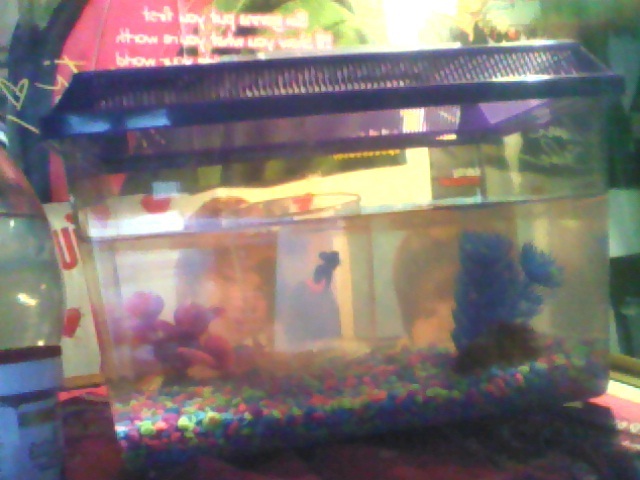 Mating My Bettas
Question
My Betas Geno and Maje
Hi, I got a male crown
Mating My Bettas
Question
My Betas Geno and Maje
Hi, I got a male crown
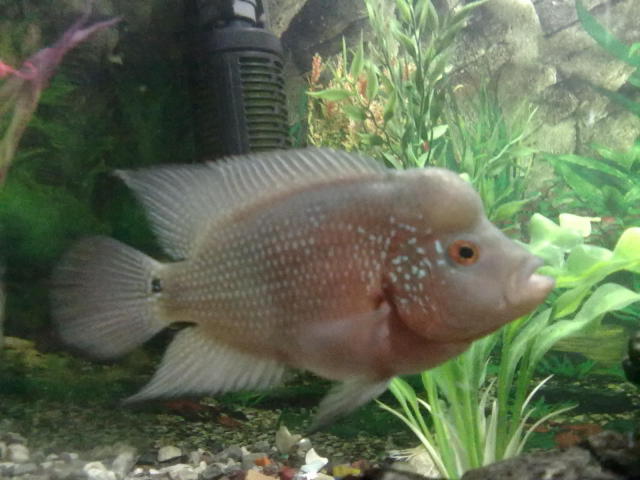 flower horn disease
Question
my flower horn
hey, i am new in this hobby and
flower horn disease
Question
my flower horn
hey, i am new in this hobby and
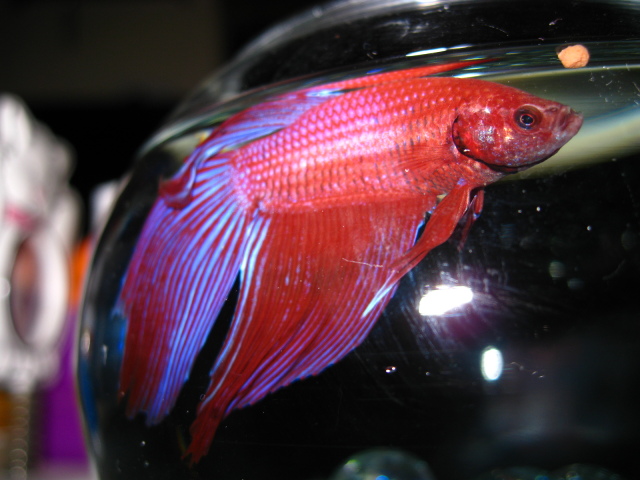 Betta Fish wont eat.
QuestionPeso
QUESTION: On March 4th, a friend ga
Betta Fish wont eat.
QuestionPeso
QUESTION: On March 4th, a friend ga
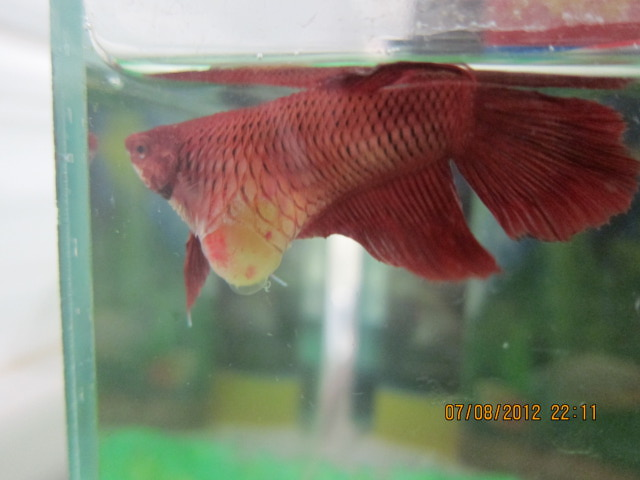 Bloated Belly
Question
My Beta fish Bloated Belly
Hello
Bloated Belly
Question
My Beta fish Bloated Belly
Hello
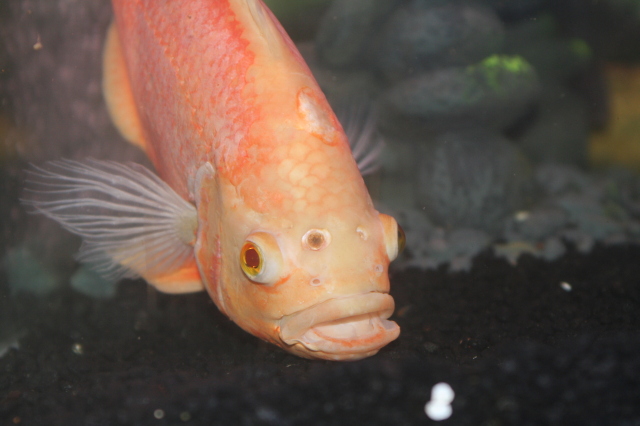 Jack Dempsy
Question
Oscar
Follow-up photo of the Oscar with hole i
Jack Dempsy
Question
Oscar
Follow-up photo of the Oscar with hole i